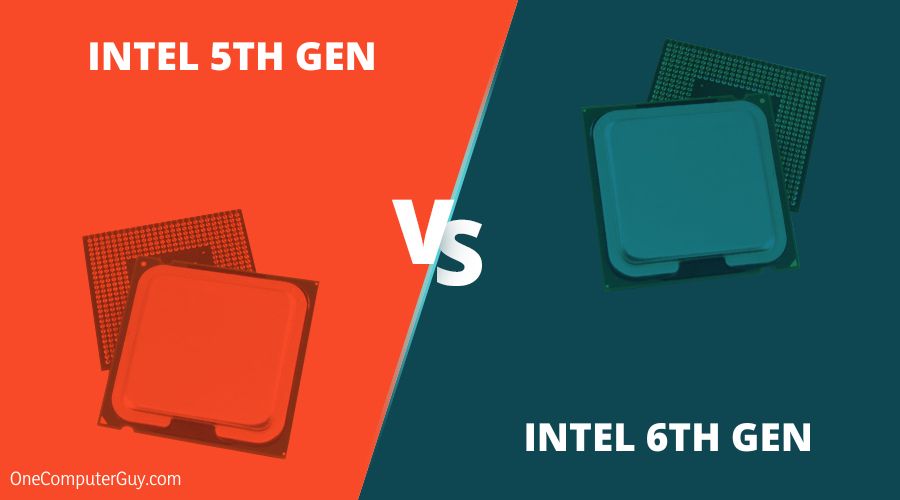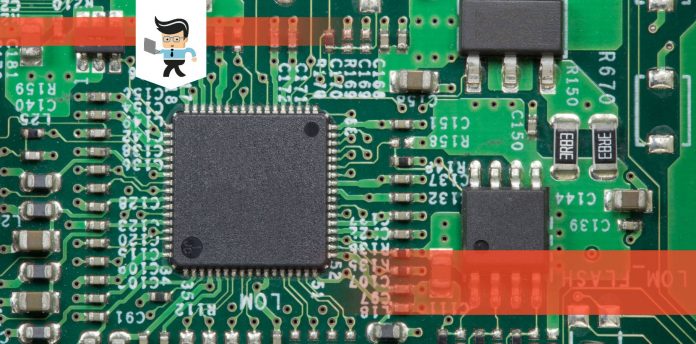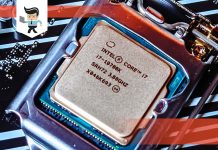It is a common question that many have pondered: Intel 5th Gen vs 6th Gen. You can easily find forum after message board after subreddit that talks about the differences and similarities between the two processors, but a lot of the information is outdated, repetitive, and plain wrong.
 Our experts have done a thorough investigation, found out what is similar between the two and the differences between 5th and 6th generation Intel processors.
Our experts have done a thorough investigation, found out what is similar between the two and the differences between 5th and 6th generation Intel processors.
| Intel 5th Generation | Intel 6th Generation | |
| Nickname | Broadwell | Skylake |
| Chips Used | Celeron, Pentium, Xeon, Core M | Xeon |
| Cores | Dual-core / 2 computing threads per core | Dual-core / 2 computing threads per core |
| Cache Size | 3 MB | 2-8 MB |
| Speed | 2.2-2.7 GHz | 2.2-4.0 GHz |
| Focused Usage | Laptops/Tablets | Laptops/Tablets/Desktops |
Contents
1. Intel 5th Generation: Overview
The Intel 5th GEneration is better known as “Broadwell.” It was the codename used in the production of the 14 nanometers die shrink of the architecture and has stuck. This iteration of Intel’s famous processor changed and improved a few things, but it drew heavily from the previous microarchitecture Haswell.
Some people also call Intel’s 5th generation by their specific chip names, including Celeron, Pentium, and Xeon. It is also used in Core M processors.
– Improvements:
Broadwell has some distinct improvements over earlier iterations. It improves the performance of arbitrary-precision integer operations using RDSEED. It uses SMAP or Supervisor Mode Access Memory Prevention, which makes this processor more secure than other versions. Hackers looking to take advantage of software bugs can sometimes still do it, but it is more challenging.
– New Features:
Some of the brand new features include Broadwell’s Intel Quick Sync Video hardware video decoder, which adds VP8 hardware decoding and encoding support. This makes video commands quicker and the response time when doing anything that requires visual and/or auditory speed.
Problems: One of the biggest problems with the 5th generation processors is that so few people bought them that Intel moved on quickly to the 6th gen. While you can still purchase these processors (often at a discount), they don’t have as much support, and there isn’t a lot of information out there about them if something does go wrong. Part of this is due to a lack of desktop CPUs for this one, and there was an even bigger manufacturing problem. There wasn’t a lot of these available when the next generation came out.
Interestingly enough, users cannot get Intel’s 5th generation in lower-priced processors. It is only used on expensive gaming, or professional quality builds. Intel 5th generation is the primary chip for tablets and certain ultrabooks as well.
2. Intel 6th Generation: Overview
Intel’s 6th generation came out in August 2015, not long after the Broadwell release. It was developed using the same microarchitecture. It dramatically improves CPU and GPU performance and reduces power consumption, something Broadwell tried and failed to do.
Skylake is the last Intel platform that supports Windows earlier than Windows 10, though some modifications allow people to use newer ones.
– Improvements:
Under Intel 6th Generation, there were significant improvements in laptops and tablets’ battery life. This processor didn’t seem to generate as much heat under regular stress loads, so it was more popular amongst gamers and heavy users.
– New Features:
Intel Israel developed the processors so small that they more than halved some laptops’ size using this processor. It made for extremely portable laptops and models that were still powerful.
This processor was very popular with gamers because it could easily be overclocked without a lot of experience or tinkering.
– Problems:
While the 6th Generation lacked the manufacturing problems of the 5th Generation, it was still only the newest processor generation for a short time. Another known problem is that these CPUs can be somewhat unpredictable with hyperthreading, though there are patches that come out occasionally. Skylake is particularly susceptible to Spectre attacks.
Intel 5th Generation vs 6th Generation
The main difference between intel 5th gen and 6th gen is, the 6th Generation has more support for the bugs and better fixes, more integrations and is more readily available, while the 5th Generation offers better security.
Since the Intel 6th Generation is an improvement on the 5th, it’s not easy to spot differences. It is easy to say that the 6th generation did have a better chance because it was more popular and used in more builds than the 5th generation CPUs.
– Bugs:
All Intel CPUs have some bugs, some that are easy to take care of, and others with problems. Both of these CPUs aren’t immune, but the 6th Generation has more support for the bugs and better fixes. The 5th Generation got lost.
-
Winner: 6th Generation
– Popularity:
Due to manufacturing problems, the 5th Generation was not nearly as popular, meaning there is less known about fixes, uses, and ways you can push it. The 6th Generation, though it was short-lived, did have a passionate following.
-
Winner: 6th Generation
– Ease Of Access:
Both of these CPUs have been retired by Intel and replaced with newer models. Still, it is much easier to find the 6th Generation CPUs for resale or even brand new. With some research, you can find both.
-
Winner: 6th Generation
– Speed:
Of the two options, the 6th generation is markedly faster in almost all ways. From booting up the computer to how fast the ports are, the 6th generation wins this competition by a landslide.
-
Winner: 6th Generation
– Supported Integrations:
Since the 6th Generation was more popular, there are far more integrations that can be used, both from Intel itself and other integrations from users.
-
Winner: 6th Generation
– Security:
While intel works to keep their CPUs secure, the 5th generation comes out ahead of the 6th generation in terms of security. They are very similar, but Skylake’s Spectre attack susceptibility makes it not entirely as secure.
-
Winner: 5th Generation
How To Pick A CPU
If you are picking a new CPU, you will likely be building your computer or laptop. Most desktop computers and traditional laptops come with the parts already chosen. If you are going to buy one, you need to think about the following aspects:
– The Number of Cores:
Cores are important, and you can find anything from dual-core to eight-core processors. Both the 5th and 6th generation Intel CPUs have dual-core. Most software released today needs multiple cores to work properly. The more cores a CPU has, the faster and more efficient a computer will be.
– Cache Size:
A processor’s cache is similar to a memory in a computer. It is a small amount of very, very fast memory that gets used for temporary storage. The larger a cache is, the more files it can access quickly.
– Bugs:
When there is a known bug for a CPU, it is best to pay attention. Bugs can destroy any of the other useful features, rendering them a hindrance. Some CPUs are so bad that most people give up and ultimately replace them.
– Speed:
The faster a CPU is, the better it will handle heavy loads and stress. Slow CPUs can hinder performance in gaming, streaming, music, and production. Most people won’t notice slight differences, but it is possible.
– Compatibility:
If you are building your computer, you need to pay attention to what is compatible with the CPU. Most Intel CPUs have a ton of compatibility options, so you should be fine there.
– Thermal Design:
CPUs give off a lot of heat, particularly when you push your computer. If you are going to overclock, be sure that your CPU can handle it. While not having a good thermal design doesn’t disqualify a processor, it can be challenging to use in specific situations. It can also make it nearly impossible to keep your system cool enough without adding on another cooling system.
Of course, it is essential to note that home users have different needs than someone who uses their computer for business. Anyone who plays games online, particularly those who want to play with other people or streams, needs to have a better quality CPU.
Conclusion: Intel 5th Gen vs 6th Gen: Which Comes Out On Top?
If you are trying to weigh whether Intel 5th Generation or Intel 6th Generation is better, all you need to do is look at which one was historically more popular. While this doesn’t always indicate the better option, it certainly does in this case.
Of course, a good CPU isn’t the only thing that matters in a build. Still, it helps a lot to have more options, better support, and a greater bank of information to pull from like you do with the Intel 6th Generation CPU.







